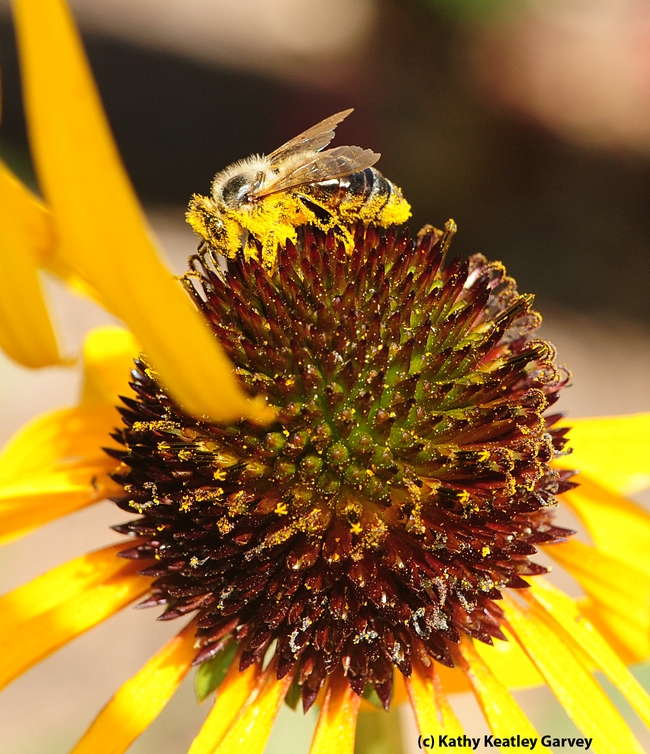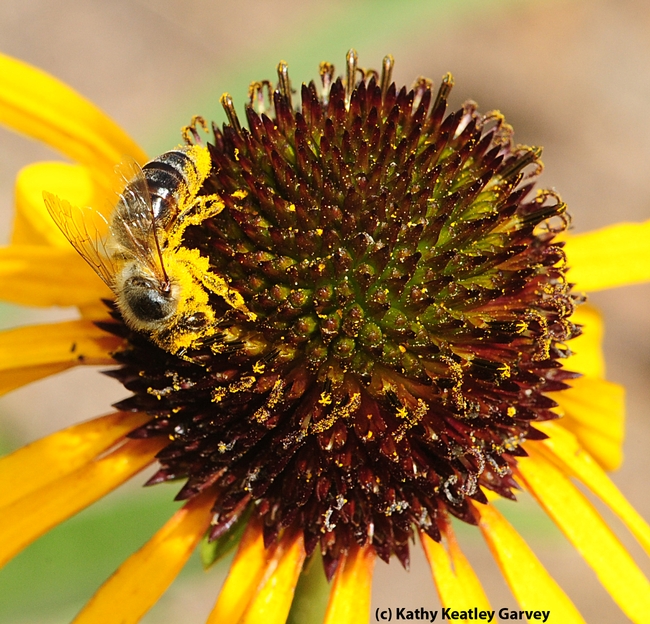Bees carry pollen in their pollen baskets, but that's not the only place.
"Pollen grains adhere to the bee's hairs, influenced by opposite electrical charges," writes Norman Gary, emeritus professor of entomology at the University of California, Davis, in his popular book, Honey Bee Hobbyist: The Care and Keeping of Bees.
Bees comb and brush the pollen into their pollen baskets but, as Gary writes, "Fortunately for the plants, bees aren't 100 percent efficient at transferring the pollen to the pollen baskets. Thousands of pollen grains may still remain on their bodies even after they finish grooming. Bees leave enough pollen behind, depositing it accidentally on female flower structures to ensure effective pollination."
Honey bees collect nectar, pollen, propolis (plant resin) and water to keep the colony humming. Nectar is the colony's carbohydrate (sugar) while pollen is the protein. Pollen also contains such nutrients as minerals, vitamins and fatty substances.
"During an entire year, a typical bee colony gathers and consumes about 77 pounds of pollen," Gary writes, adding that a single pollen-foraging bee will average 10 trips per day. "When pollen is abundant, a bee can gather a full load in as little as ten minutes by visiting several dozen flowers," he points out.
If you look closely, sometimes you'll see a bee covered with pollen. The bee below was on a yellow coneflower (Echinacea paradoxa) in Napa.
If you're allergic to pollen, these photos just might make you sneeze!
Attached Images:

